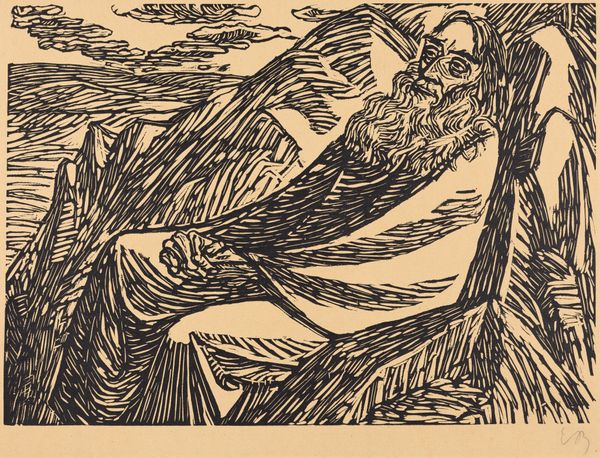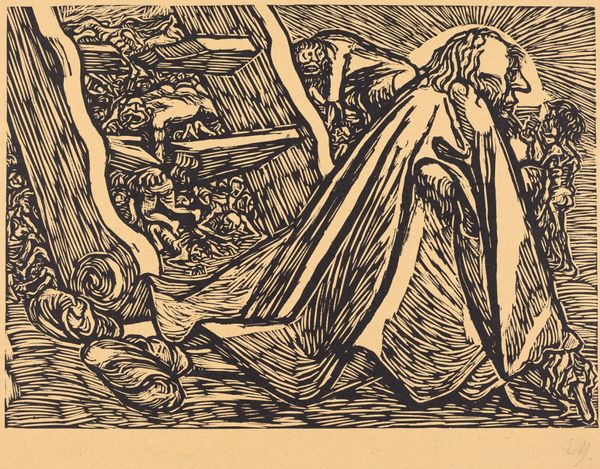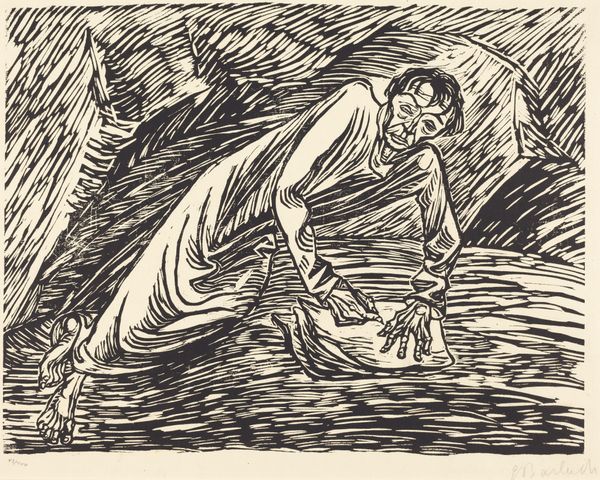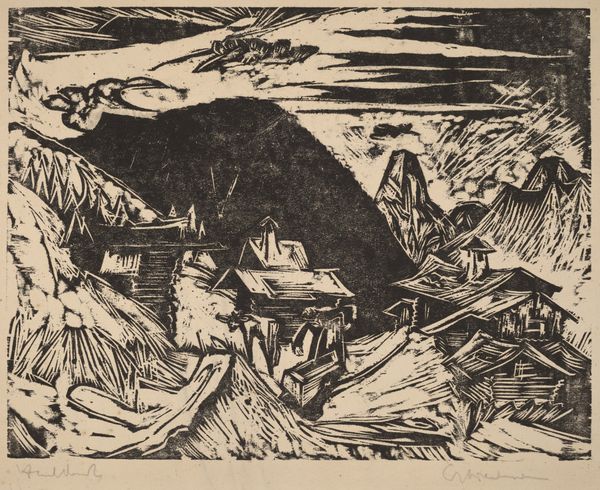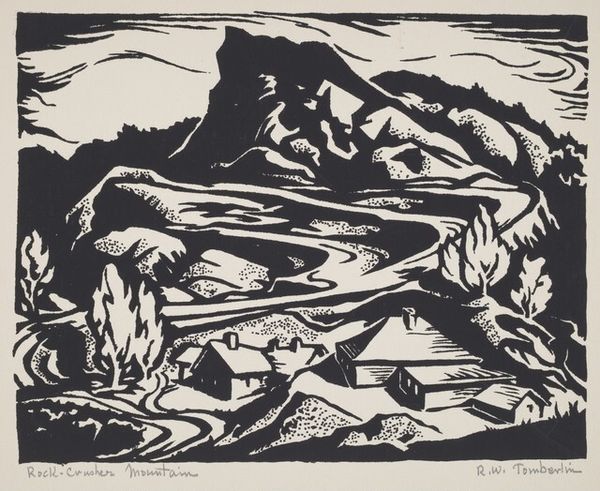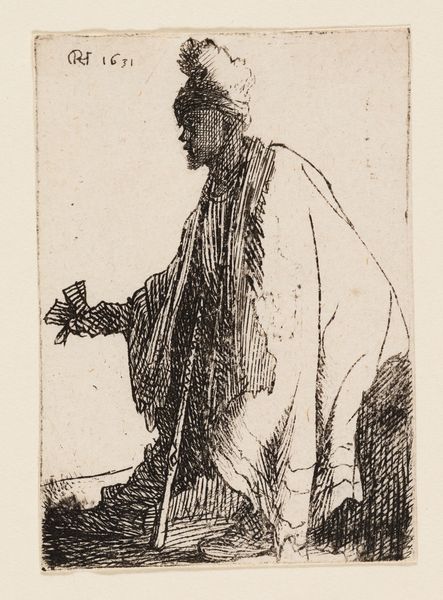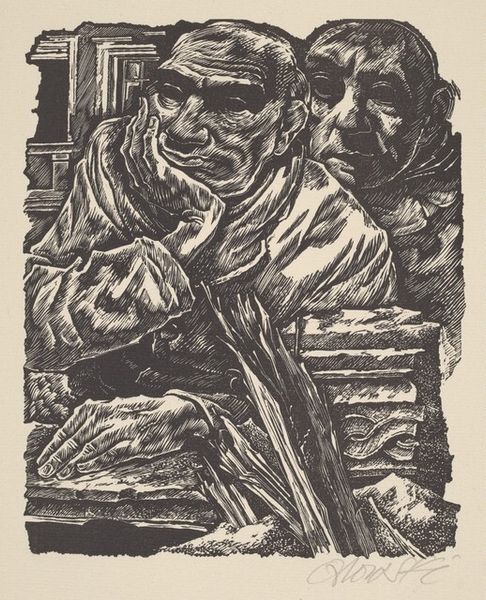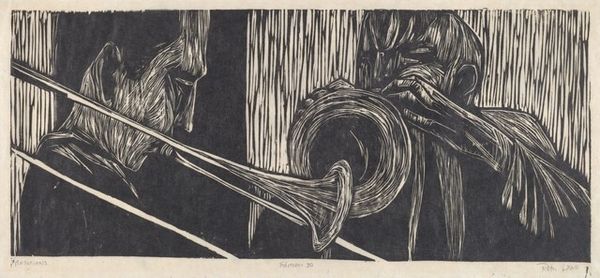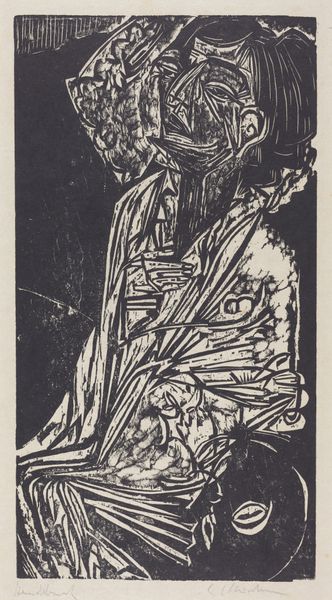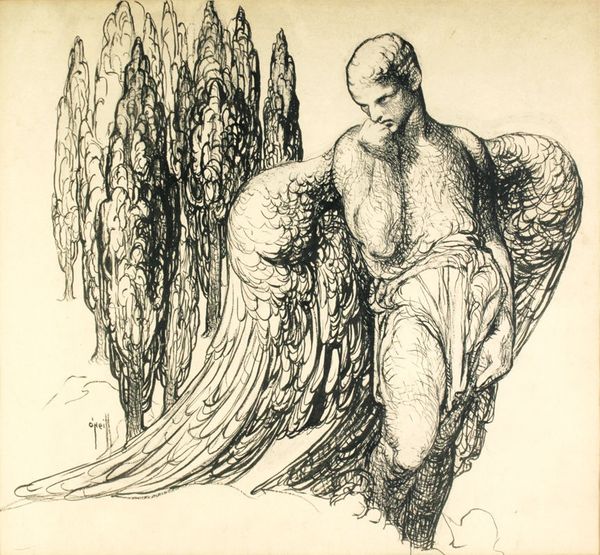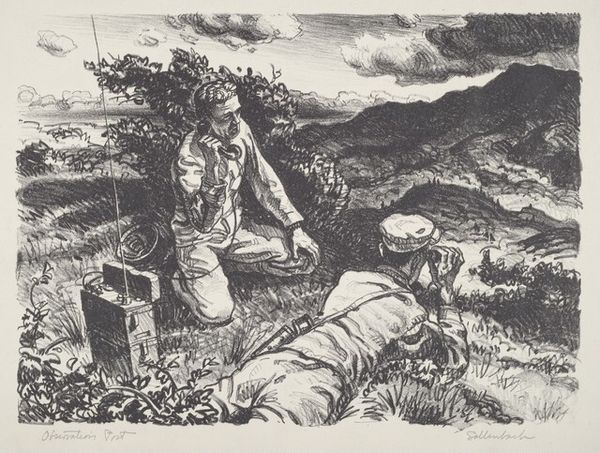
print, woodcut
# print
#
landscape
#
german-expressionism
#
figuration
#
form
#
woodcut
#
line
Dimensions: image: 25.7 x 35.8 cm (10 1/8 x 14 1/8 in.)
Copyright: National Gallery of Art: CC0 1.0
Curator: Ernst Barlach’s stark woodcut, "The Cliffs," from 1920, captures a figure dwarfed by a dramatic landscape. Editor: My initial impression is one of intense vulnerability. The heavy, dark lines convey a feeling of being overwhelmed, almost crushed. Curator: Barlach, as a key figure in German Expressionism, often used woodcut for its raw, expressive capabilities. It’s fascinating how the inherent nature of the wood itself—the grain, the resistance to the blade—becomes part of the work's meaning, reflecting the arduous lives of the working class and their connection to the earth. We have to think about the wood selection. Was this easily obtained? Editor: Yes, the deliberate crudeness amplifies the emotional weight. The stark black and white, devoid of any softening gradations, throws into sharp relief the contrasting textures and planes of the figure and surrounding cliffs. It’s almost a spiritual cry. The upward tilt of the figure’s head...what’s he looking at? Curator: We know Barlach was deeply affected by his experiences in World War I. I interpret this upward gaze as one of supplication, a plea against a landscape mirroring societal fracture and collapse. And of course, the medium of the woodcut itself offered the possibilities for mass production, something integral to the Expressionists' attempt at making artwork available to and representative of the working masses. Editor: The composition really directs the viewer’s eye. The stark diagonals of the cliffs lead directly to the figure, anchoring him within this almost aggressive environment. He looks less like a conqueror and more like someone on the verge of collapse. Curator: Absolutely, it speaks to Barlach's social commentary, underscoring the worker’s place in that system, literally under the weight of the world he builds. How this impacts consumption by contemporary eyes, or within the avant-garde circles. Editor: Thinking about form, I find that the reduction of detail makes it so powerful. Barlach communicates so much with such a bold manipulation of line and form. Curator: Indeed, its very materiality embodies a sense of urgency and stark reality. Editor: This image lingers, compelling a continued close looking at the work's many details. Curator: An incisive look at a defining era.
Comments
No comments
Be the first to comment and join the conversation on the ultimate creative platform.
